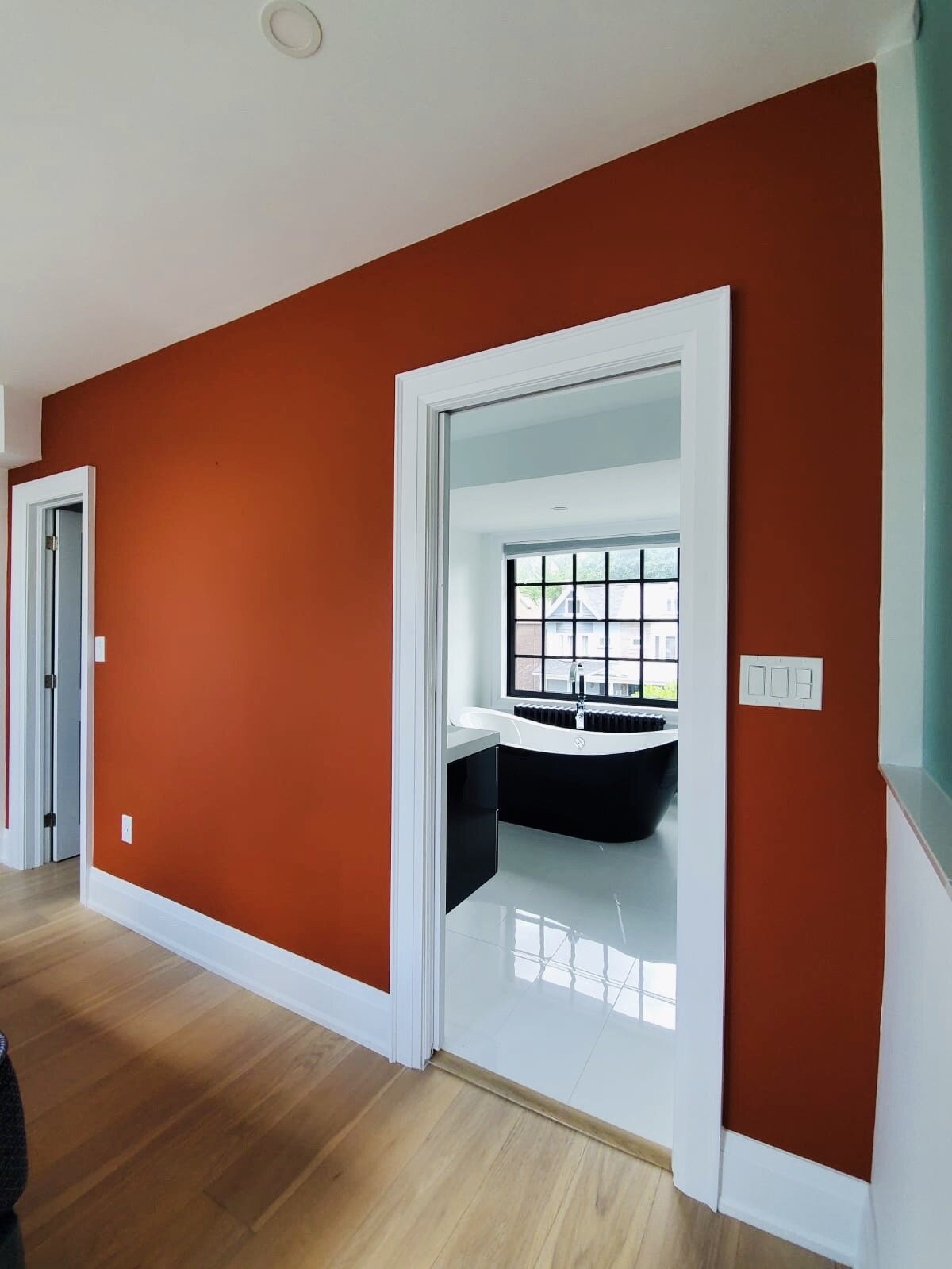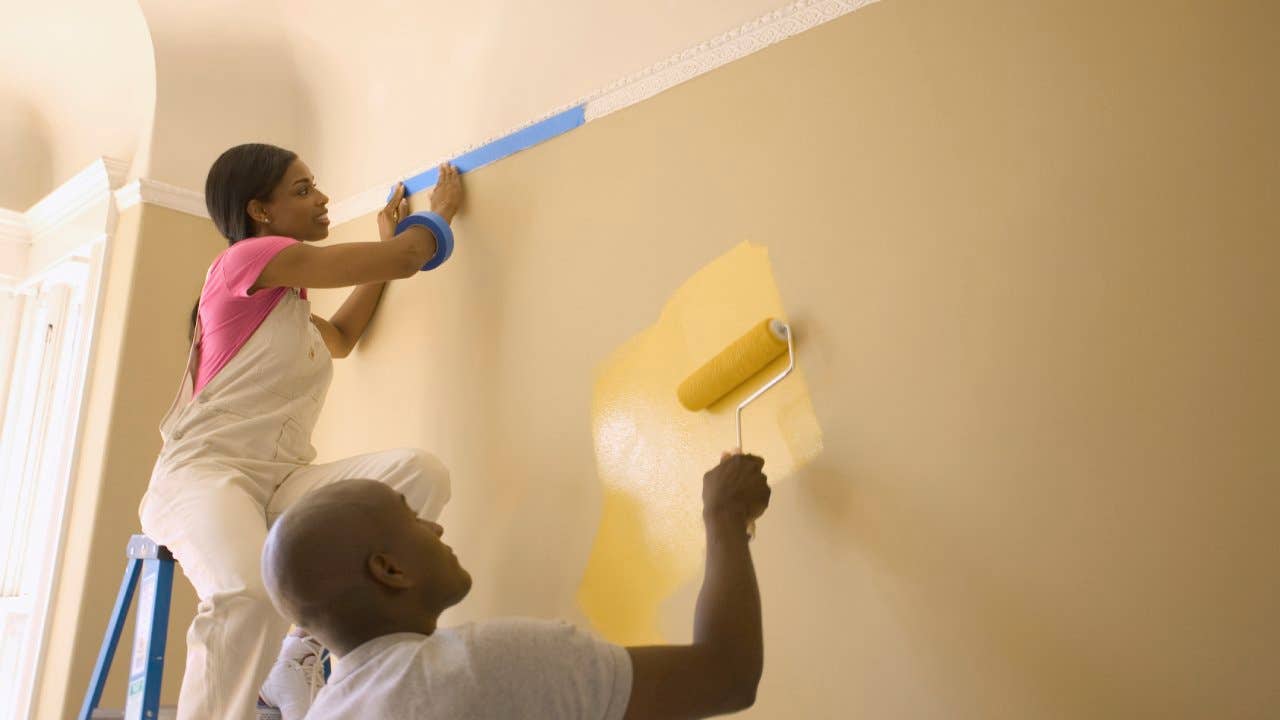Rejuvenate Your Space With Exterior And Interior Home Painting
Rejuvenating your area with both indoor and exterior house paint is a calculated technique to enhancing your home's overall ambiance and market worth. Understanding the long-lasting advantages of quality paints goes beyond appearances; it entails considerations of toughness and upkeep.
Benefits of Residence Paint
Transforming a home's look with paint not only improves its visual appeal but likewise provides significant useful benefits. A fresh coat of paint acts as a protective obstacle versus environmental elements, such as moisture and UV rays, which can bring about degeneration over time. This safety layer is specifically critical for exterior surfaces that deal with the burden of the climate.
In addition, indoor painting can enhance air top quality by utilizing low-VOC or zero-VOC paints, which reduce hazardous discharges and promote a much healthier living atmosphere. This is particularly valuable for families with kids or individuals with breathing issues.
In addition, residence paint can raise property worth. A well-maintained home with a modern shade palette brings in possible purchasers, making it a sound investment for property owners aiming to offer. Routine paint likewise shows a feeling of care and attention to detail, improving the general bankability of the residential or commercial property.
Lastly, painting enables house owners to express their individual design and develop an inviting atmosphere. Whether updating obsolete colors or rejuvenating faded walls, painting can invigorate a room, making it really feel new and welcoming. Overall, the benefits of house paint are both aesthetic and practical, making it an essential facet of home upkeep.

Selecting the Right Colors
Picking the appropriate colors for both indoor and outside home paint is a crucial component of improving a home's visual appeal and value. Color options can considerably affect the perception of room, state of mind, and architectural functions. When considering outside shades, it is important to take into consideration the surrounding environment, neighborhood visual appeals, and any kind of homeowner organization guidelines. Natural tones, for example, can create a harmonious mix with nature, while brighter shades may offer a contemporary pop that attracts attention.
For indoor spaces, colors should be chosen based on the feature of each space. Softer hues promote peace in rooms, while vivid shades can stimulate living locations or playrooms. Florentina’s Painting LLC Interior Painting. In addition, think about exactly how all-natural light interacts with shades throughout the day; a shade might appear different under varying lighting problems
Furthermore, it's useful to create a cohesive shade scheme that moves throughout the home, attaching different rooms while permitting for individual expression in each space. Using shade swatches and samples can assist in picturing the last result, guaranteeing that your choices align with your vision and improve both the interior and outside charm of your home.
Interior Painting Techniques
When it involves executing a successful interior paint task, recognizing numerous techniques is necessary for achieving a polished and professional surface. One basic strategy is the "cut-in" click method, which entails utilizing a brush to paint sides and edges before rolling the wall surfaces. This creates clean lines and prevents roller marks.
An additional efficient method is the usage of different roller snooze lengths. A shorter snooze is perfect for smooth surface areas, while a much longer snooze can aid cover distinctive walls, making certain an even application of paint. Additionally, utilizing a "back-rolling" method after spraying can help to uniformly disperse paint and improve bond.
For even more complex layouts, methods such as stenciling or sponging can add depth and personality to a room. These approaches call for precision and practice but can produce stunning results.

Lastly, proper surface area preparation-- consisting of cleansing, sanding, and priming-- is vital to any type of painting technique. This not just guarantees better paint adherence yet also lengthens the life of the finish. By understanding these interior painting methods, property owners can transform their rooms with self-confidence and imagination.
Outside Painting Basics
Effectively taking on an outside paint project requires careful planning and attention to detail. The very first action is to select top notch paint that is particularly formulated for exterior use, ensuring longevity versus the elements. Think about the environment of your region, as various paints offer varying levels of wetness resistance, UV protection, and temperature flexibility.
Following, appropriate surface prep work is critical. Tidy surface areas extensively to eliminate dirt, mold, and peeling paint. Fix any type of problems, such as fractures or holes, to produce a smooth substratum for painting. Priming is typically suggested, specifically for bare or previously unpainted surface areas, as it boosts bond and improves the paint's longevity.
Pay attention to the application technique; working in convenient areas and applying even layers will yield optimal results - Florentina’s Painting LLC Interior Painting. Suitable problems include reduced moisture, moderate temperatures, and very little wind, which can affect drying out times and paint adherence. By useful reference concentrating on these basics, you can make sure a successful and aesthetically pleasing external painting job.

Maintenance Tips for Longevity
Routine upkeep is important for protecting the durability and appearance of both indoor and exterior paintwork. To guarantee your paint lasts, begin with regular assessments. For exterior surface areas, look for signs of peeling off, breaking, or fading, and address these concerns immediately to protect against further damage. Clean surface areas consistently to remove i thought about this dust, mold, and grime, utilizing a moderate detergent and soft brush as required.
For indoor spaces, maintain a consistent temperature and moisture level to decrease paint wear and tear. Dust wall surfaces and walls periodically and think about utilizing touch-up paints to cover small scuffs or scrapes.
Additionally, inspect and maintain caulking around windows and doors; replacing used or split caulk will protect against dampness intrusion, which can jeopardize paint high quality. When repainting, choose top notch paints that offer far better longevity and resistance to ecological variables, making sure a longer-lasting finish.
Final Thought
In verdict, house paint offers as an effective tool for renewing both the interior and outside of a home. Implementing upkeep strategies can prolong the life of the paint, protecting the investment made in the revitalization process.